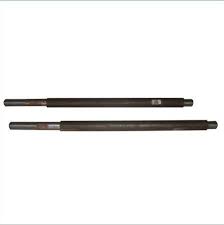Ejector Rods
Ejector Rods
Overview
Ejector rods (also known as ejector pins or push rods) are essential components in molding processes such as die casting and injection molding. Housed within the movable half of the mold, these slender, durable rods apply controlled force to expel the molded or cast part cleanly and efficiently.

Ejector Rods
Key Features
Simple & Versatile Design
Ejector rods are the most widely used ejection mechanism due to their easy manufacturing, maintenance, and effective ejection performance.Robust Material Construction
Typically crafted from hardened steels like nitride H13 (case-hardened up to HRC 65–70), through-hardened, or black-coated variants, these materials offer superior wear resistance and thermal stability—especially for high-temperature die casting.Customizable and Diverse Types
Ejector rods come in various forms tailored to different part geometries:Standard cylindrical rods — general use
Blade pins — ideal for thin or recessed surfaces
Stepped pins — allow multi-stage ejection for complex parts
Hollow tubes — for consistent circular ejection and minimized part deformation
Efficient Support & Alignment System
The rods are fixed to an ejector plate or retainer and guided by bushings or pillars, ensuring precise stroke control and reducing wear. Modern dies may even connect rods directly to the machine for streamlined operation.Balanced Force Application
Proper placement and use of multiple rods ensure even force distribution during ejection, minimizing risks of part distortion, damage, or surface defects.High-Quality Surface Finish
Thoughtful rod placement and type selection help reduce visible ejector marks on cosmetic parts, preserving aesthetics while maintaining function.
